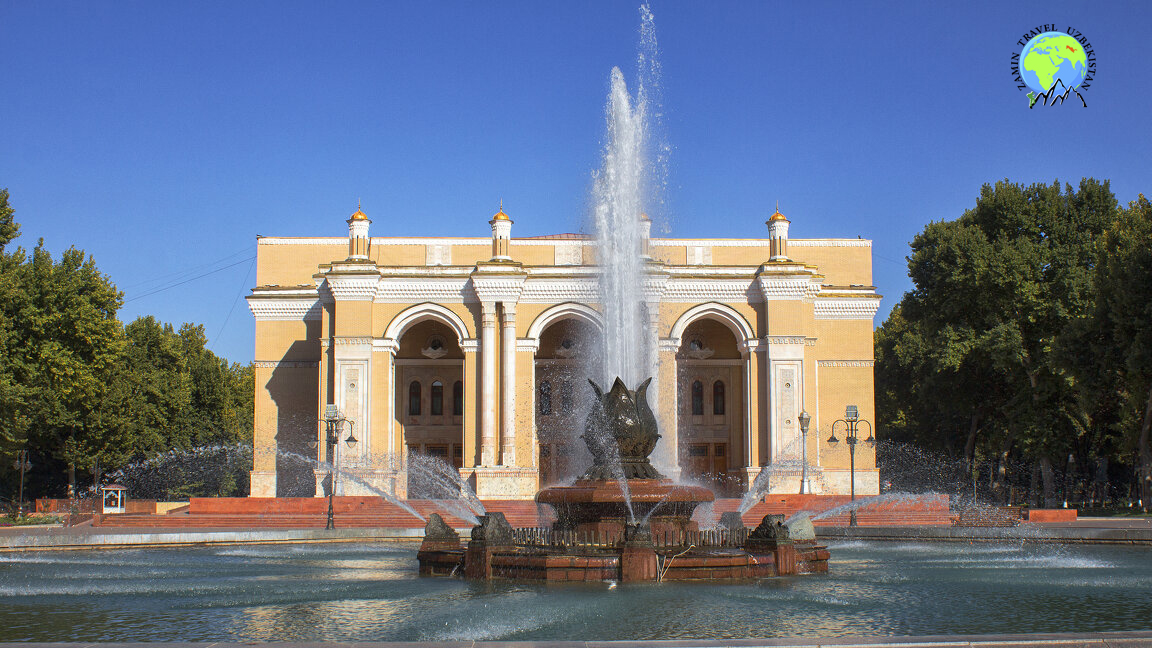


The theater square with its shady chestnut avenues, well-tended flower beds and cool fountains has long been one of the most popular places to rest and relax for the residents of Tashkent. In the middle of the square is the building of the Navoi Opera and Ballet Theater. Its appearance is elegantly aligned with the design philosophy of classical theater and traditions of oriental architecture. Huge, slightly pointed arches at the main entrance are reminiscent of the shady Ayvan terraces of madrasah schools in Asia. The elaborate design of the building, the combination of light and shadow in the loggias through the deeply vaulted cover, the decorative engravings on polished marble from Gazgan - all of this gives you the unforgettable impression of a monumental building. Therefore it is not without it Reason that the image of the theater is sometimes used as a "visiting card" of Tashkent. The history of the oldest opera theater in Uzbekistan began with the establishment of a national ethnic ensemble in 1926. In 1939, construction of the new theater building began. The world famous architect, academician A.V. Schusev was given the task of designing and directing the construction. Construction was in full swing when the Second World War began. The work was then temporarily suspended and resumed in 1945, with support from Japanese Prisoners of war who were used as labor. In 1947, the new building of the Navoi State Academic Bolshoi Theater opened its doors to the public. The theater offers 1,500 seats and has excellent acoustics; a huge crystal chandelier hangs from its ceiling. The well-known artist Tschingis Akhmarov covered the walls of the foyer with paintings depicting scenes from the works of the famous poet and statesman Navoi, from his poetry. But most of the six festive lobbies were decorated with "ganch" carvings. The finest gentlemen of Uzbekistan, who performed decorative work in various traditional craft schools, were made by Usto Shirin Murodov under the direction of the famous artist "Ganchkor". The “Samarkand” lobby is decorated with two-layer openwork panels in “Islimi style”. The decorations in the “Ferghana” lobby inspire visitors with their sophistication and a multitude of patterns. Old gunch stucco patterns were used to decorate the “Termez” lobby; the same patterns decorate the Termez ruler's palace from the 12th century.